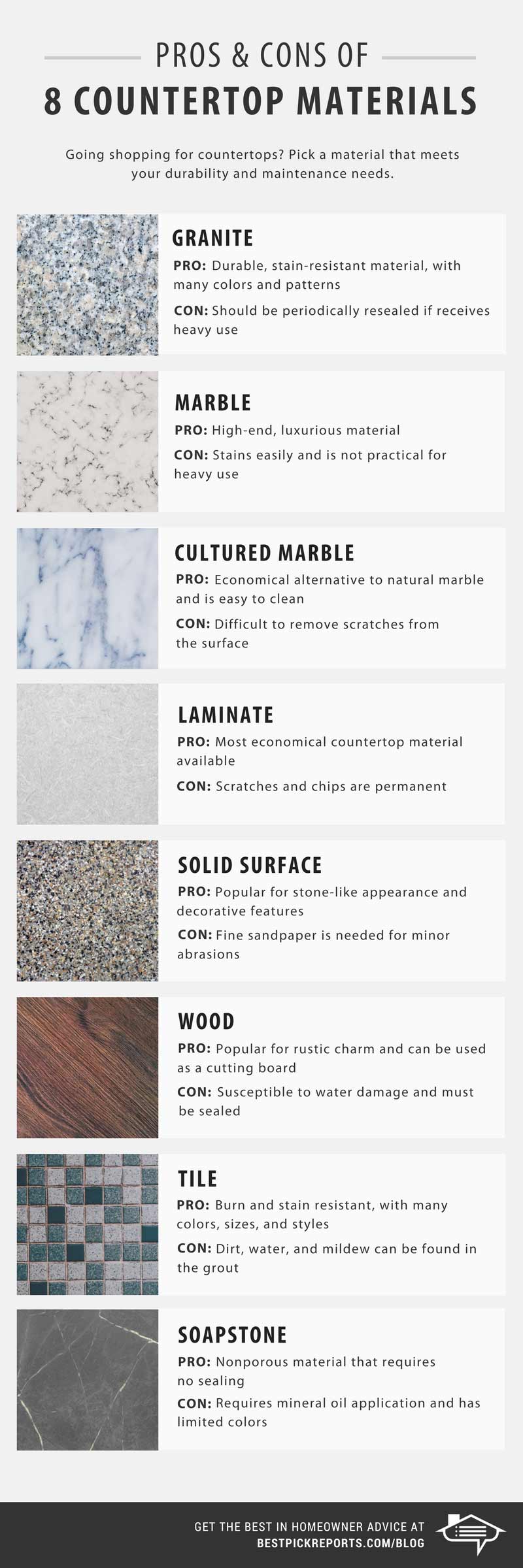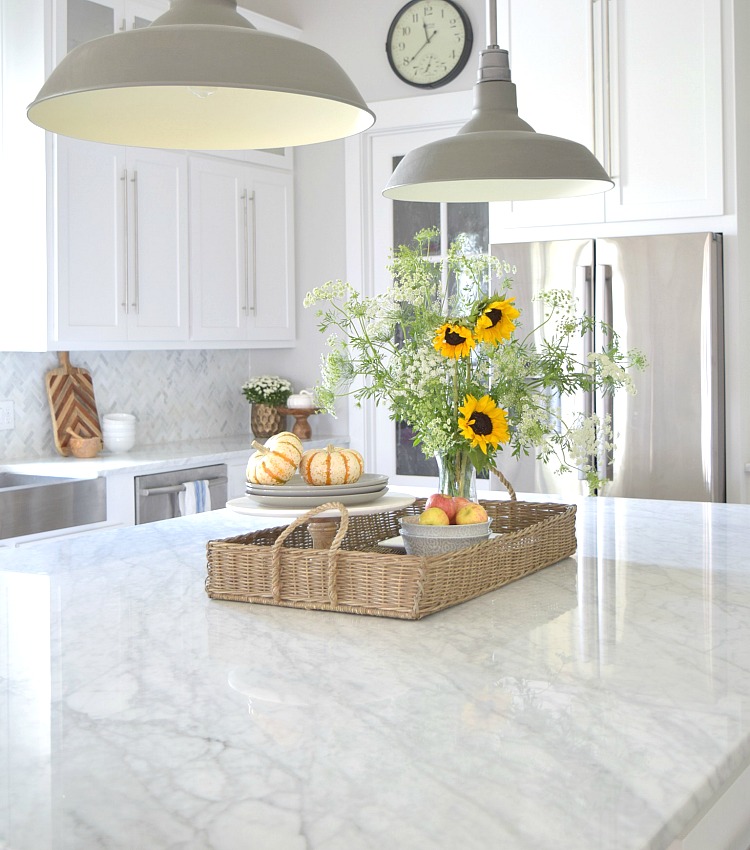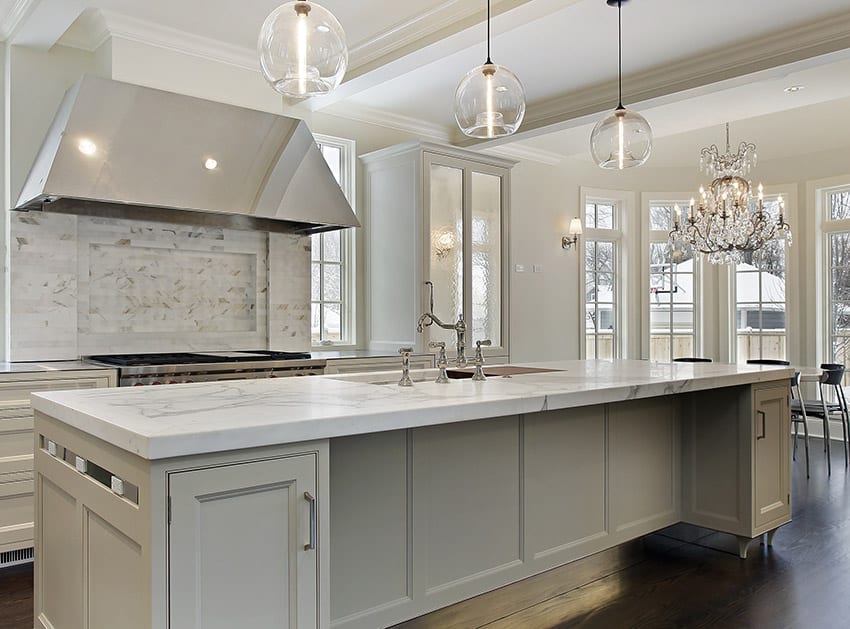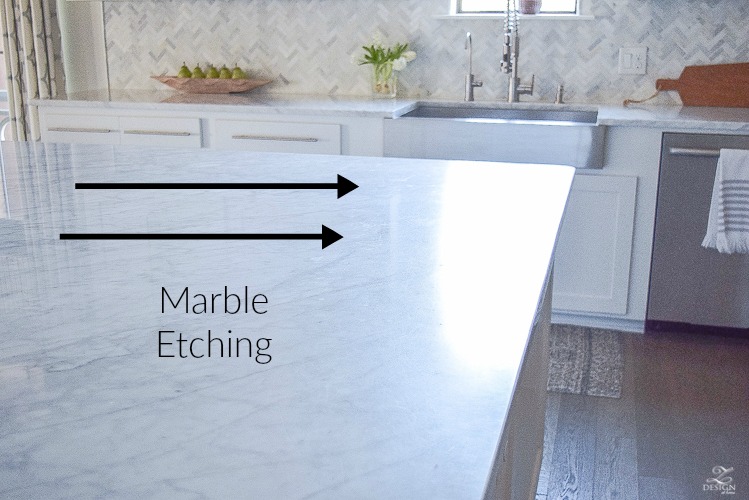Marble countertops in the kitchen have been a timeless choice for homeowners, renowned for their classic and luxurious appearance. However, like any other material, marble comes with its own set of pros and cons. Let’s delve into these aspects to help you make an informed decision for your kitchen.
Starting with the positives, one of the most notable advantages of marble countertops is their unmatched aesthetic appeal. The natural patterns and color variations create a unique and elegant look that can elevate the overall design of your kitchen. Marble’s versatility is also worth mentioning; it seamlessly complements various styles, from modern to traditional, making it a versatile choice for homeowners with diverse tastes.
Beyond its visual allure, marble boasts excellent heat resistance. This makes it an ideal surface for baking and cooking activities, as you can confidently place hot pots and pans directly on the countertop without fear of damage. The cool surface of marble is particularly beneficial for pastry chefs, providing an optimal environment for working with dough and chocolate.
Moreover, marble countertops tend to increase the resale value of a home. Potential buyers often view marble as a premium feature, which can be a significant selling point. Investing in marble can be seen as an investment in the overall value of your property, making it an attractive option for those looking to enhance both the functionality and aesthetic appeal of their kitchen.

On the flip side, one of the most commonly cited drawbacks of marble countertops is their susceptibility to stains. Marble is a porous stone, meaning it can absorb liquids if not properly sealed. Red wine, acidic substances, and certain oils can leave lasting marks on the surface if not cleaned promptly. This vulnerability requires homeowners to be vigilant in their maintenance routine, regularly sealing the countertops to prevent staining.
Additionally, marble is prone to scratching and etching. While it is a durable material, it is not as hard as granite, for example. Sharp knives and abrasive materials can leave marks on the surface, detracting from its pristine appearance over time. This aspect may be a concern for individuals who prioritize a low-maintenance kitchen surface.
Another consideration is the cost of marble countertops. Marble can be a substantial investment compared to more budget-friendly options, such as laminate or tile. The price varies depending on the type of marble chosen and the complexity of the installation. Homeowners must weigh the upfront cost against the long-term benefits and aesthetic value to determine if marble aligns with their budget and priorities.

In terms of maintenance, while sealing helps protect against stains, it does not make marble completely impervious to damage. Regular cleaning with a mild, pH-balanced cleaner is crucial to preserving the stone’s integrity. This ongoing maintenance requirement may be a factor for those seeking countertop material with minimal upkeep.
Another consideration is the limited color options compared to other countertop materials. Marble primarily comes in shades of white, gray, and beige, which may not suit every kitchen color scheme. For homeowners with a specific color palette in mind, this restricted range could be a limiting factor.
Environmental impact is another aspect to ponder. The extraction and transportation of marble contribute to its carbon footprint. For environmentally-conscious individuals, exploring alternative countertop materials with lower environmental impact might be a priority.
Despite these considerations, many homeowners find the allure of marble countertops irresistible. The timeless beauty and unique patterns outweigh the potential downsides for those who prioritize aesthetics in their kitchen design. Additionally, advancements in sealing technology and increasing awareness of proper maintenance practices have made it easier for individuals to enjoy the benefits of marble without being overly burdened by its drawbacks.
The decision to invest in marble countertops for your kitchen involves weighing the pros and cons based on your priorities, lifestyle, and budget. The timeless elegance, heat resistance, and potential increase in property value are compelling reasons to choose marble. However, the susceptibility to stains, scratches, and the associated maintenance requirements should be carefully considered. Ultimately, understanding both the advantages and disadvantages of marble countertops allows you to make an informed choice that aligns with your preferences and contributes to the overall aesthetics and functionality of your kitchen.
Marble Kitchen Countertops: Pros, Cons, Care u0026 Maintenance

There are plenty of materials designed for the factor that it becomes difficult to choose the one, which could turn the kitchen of yours from common to extraordinary. General cleaning simply requires wiping the surfaces with a slightly moist cleaning cloth to remove dirt and soiling.
Pros and Cons of Marble Countertops – Granite Liquidators

The Pros and Cons of Marble Countertops – Brazilian Exotic Granite
![]()
Marble Countertops vs. Granite Countertops: Pros and Cons

The Real Story On {or Pros u0026 Cons of} Marble Countertops

Marble Kitchen Countertops (Pros and Cons) – Designing Idea

The Pros u0026 Cons Of Marble Countertops + What I use to Clean Mine –

Related articles:
- DIY Refinishing Cultured Marble Countertops
- Marble Countertops In Bathrooms
- Cultured Marble Countertops
- Gray Kitchen Cabinets Marble Countertops
- Modern Kitchen Marble Countertops
- Refinish Cultured Marble Countertop
- Carrara Marble Countertops Bathroom
- Marble Countertops Types
- How To Refinish Marble Countertops
- White Gray Marble Countertops